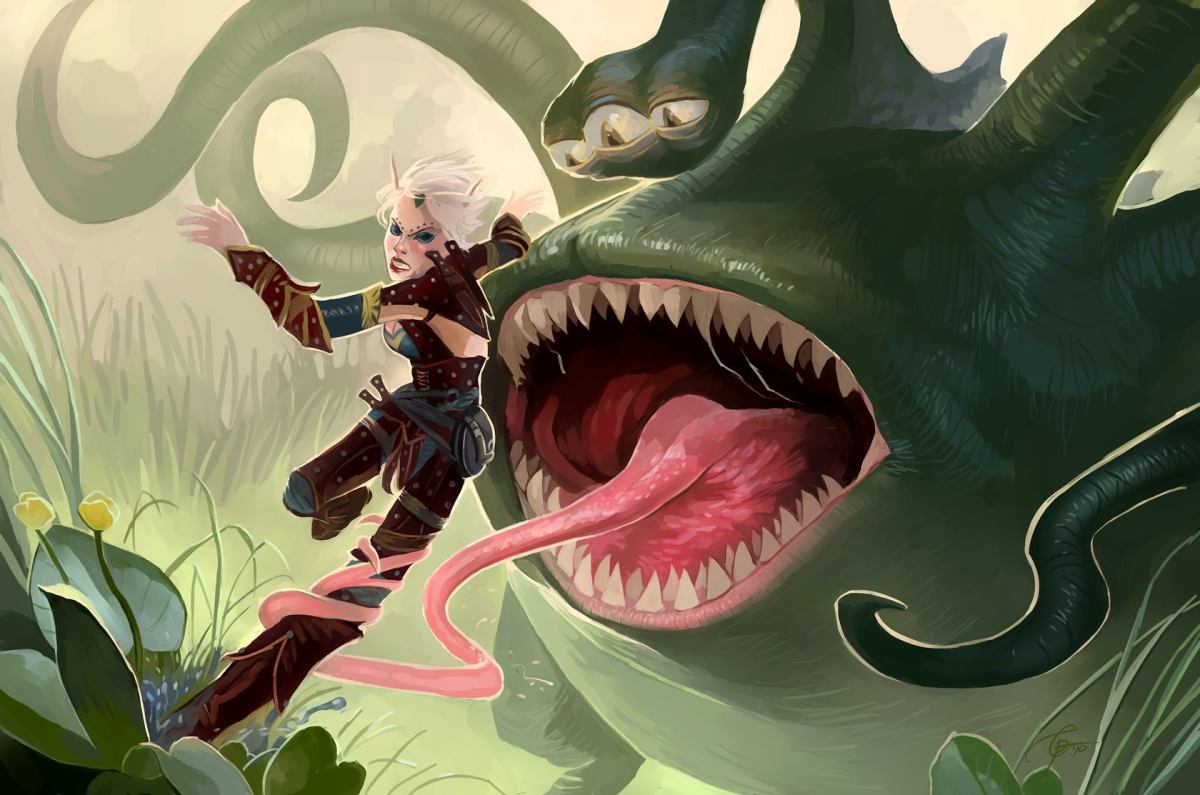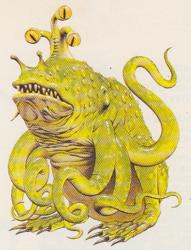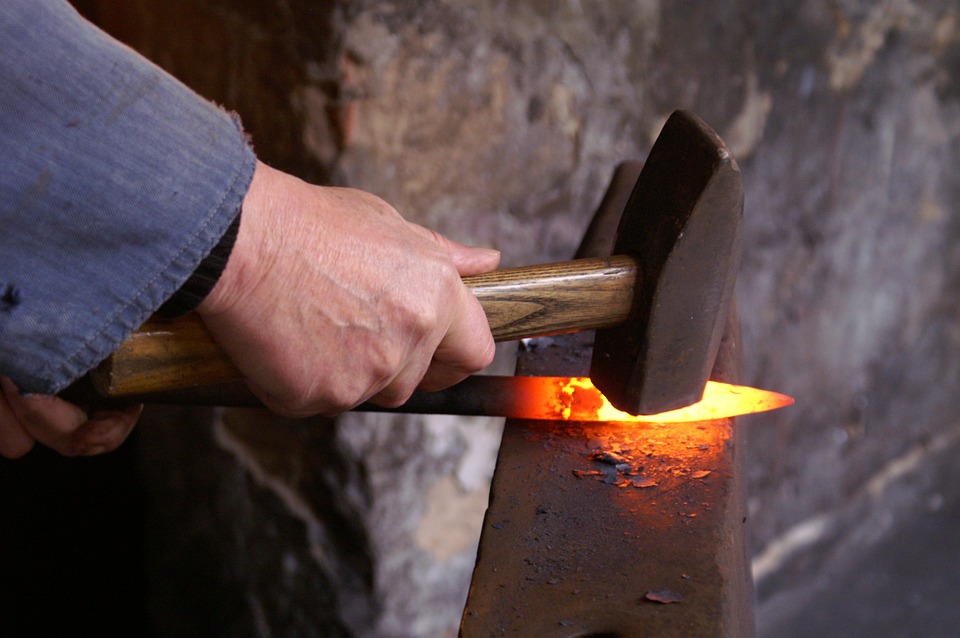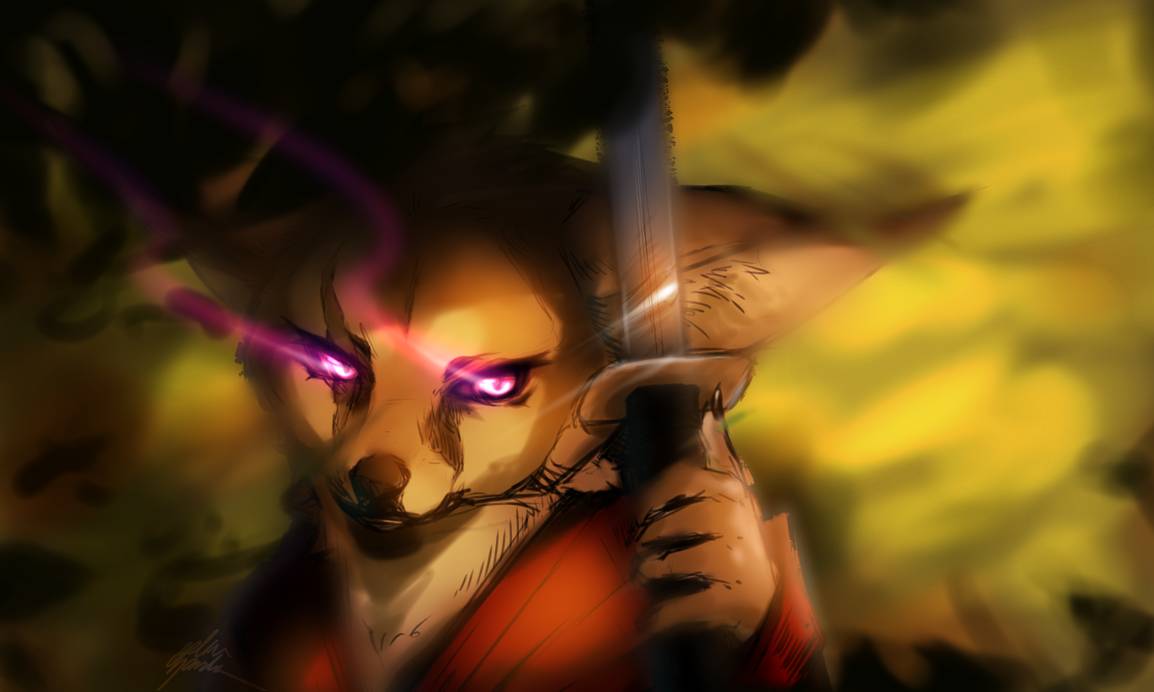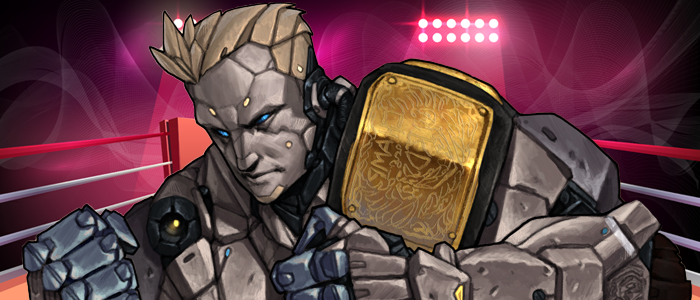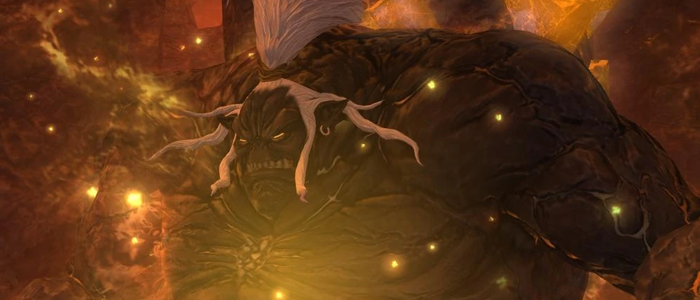Ryan here filling in for Luis this week, although without Luis this article wouldn’t be possible. For the past month he’s been using the Monstrous Physique blog for tips on converting Pathfinder 1e content to 2e. In that same timeframe, I have been lamenting 2e’s lack of two of my favourite 1e monsters: the froghemoth. Today I will be taking Luis’ advice and bringing these monsters to 2e.
Looking over Luis’ Converting 2E Monsters, Part 1 and Part 2, most of his advice starts with Paizo’s Pathfinder Second Edition Conversion Guide, written by Jason Bulmahn and fleshes it out.
WHY?
Life as an adult gamer means owning every hardcover without a second thought, but when I started gaming in high school, disposable income was a commodity. My D&D friends as a group had a decent chunk of D&D 2e books (some Advanced, some straight D&D, but we made do because purchasing a sourcebook was understood to be a significant sacrifice on that person’s part), but individually, we each owned only a few. I don’t even remember if I owned a Monster Manual, but I definitely owned Monstrous Compendium Annual Volume Two.
This softcover sourcebook populated many of my games with monsters, and I spent hours of free time reading it over, over and over. One of the creatures that stood out was the froghemoth.
This aberration was equal parts self-explanatory and absurd. It’s a common monster making trick to take an animal and change its scale. Usually this is done with insects, but when you scale up a small animal of unusual composition like a frog to the size of an elephant, suddenly you have a terrifying beast.
On top of the concept, which was excellently executed, the name perfectly fits the creature’s combination of “so it’s a big frog?” and “frogs of that size could eventually swallow all of humanity!” The froghemoth.
CONVERSION
It’s apropos that I bring this monster from my D&D 2e days over to the second edition of Pathfinder.
Step 1
From the conversion guide:
The first step is finding an existing creature with a level equal to the CR of the creature or NPC you’re trying to emulate.
I followed Luis’ example converting the Chicome Couatl by expanding the level range by 1 in either direction. The froghemoth is, appropriately, level 13. loaded up the Archives of Nethys 2e Monster filter and looked for a monster between levels 12-14. I considered also filtering for a Huge monster, but decided to see how many results I got from a purely level-based search before narrowing it down.
30 results, including six dragons, four outsiders, a couple of giants, and then unique creatures. My instinct was to convert the Astral Deva because, as a good outsider, the odds that players would recognize the mechanics at play were the lowest. However, a medium, humanoid in shape, spellcaster was too far from the huge frog monster I wanted to make, even with the similar spell level.
Instead, I took the path of least resistance: Glabrezu, the treachery demon.
Step 2
From the conversion guide:
Take the statistics from that creature and copy them over to your new creation.
Done!
Step 3
From the conversion guide:
Add or subtract various statistics, such as movement speeds, resistances, weaknesses, and immunities, as needed to make the creature feel similar
I compared the 1e glabrezu to the 1e froghemoth to see the key areas these creatures differed: Alignment, type, senses, languages, skills, ability scores weaknesses, speed, and special attacks. A surprisingly short list. But a good surprise!
Alignment: Changed a CE to an N. Done!
Type: Removed Demon and Fiend. Added Aberration
Senses: Kept Perception the same (1e glabrezu had much better Perception but 1e froghemoth had much better Initiative, so I split the difference). All-Around Vision is still a thing, but blindsight isn’t. I replaced it with wavesense, although I considered keeping glabrezu’s true seeing. I had to figure out why the froghemoth had blindsense, and assumed it was to see when submerged, not because it was immune to blindness. Wavesense felt right.
Ability Scores: Needs more Dex, Int dropped to animal level, Charisma neutralized.
Languages: Removed them all (even though I wanted to leave glabrezu’s tongues).
Skills: This is an area where top down design makes more sense. 1e froghemoth only had Perception, Stealth, and Swim. Its Stealth was +14, +22 in marshes. That’s because racial bonuses to skills capped at +8, so for the frogehemoth to be the swampland ambusher it was intended to be, the system required it to be comparably good at skulking in alleyways as a reasonably talented rogue. With no such systematic cap, I can simply double its Stealth in marches, giving it a more reasonable Stealth outside of its element and a boss Stealth in its element.
Swim was one of the 1e skills blended into Athletics, and giving the frogehemoth a high athletics (I went with 24 based on the glabrezu’s physical skills) achieves a lot: swimming, jumping, grappling, shoving, tripping. By virtue of being athletic, the 2e froghemoth can burst from the swamp, trip the paladin covering the wizard, and then jump to position to grab the wizard with its tongue, swallow them whole. It’ll take a couple of turns, but what a terrifying couple of turns!
Saves: Not on the list of changes needed, but I swapped the numbers around, giving it Fort +24, Ref +26, and Will +19.
Weakness: The 1e froghemoth has the unique weakness of being slowed by electricity. Not even sure why. It’s an easy ability to port over to 2e, although I’m not sure if I formatted it properly in the stat block. When I get a chance, I’ll research unique monster weaknesses in 2e and see if it needs a tweak.
Attacks: The glabrezu was an even better template for the frogehemoth than I thought. It has a powerful attack with a lot of reach and grab, an agile secondary attack with OK reach, and a bite attack. That’s perfectly in line with the froghemoth’s tongue, tentacles, and bite. I mostly kept the to hit and damage the same and just changed the traits and riders. After that, I used the tyranosaurus’ swallow whole ability as a template for damage and DCs.

They have a complex relationship
Since the t-rex is only level 10, I bumped everything up. Hopefully not too high. This was the step where I felt least supported, so even though the guideline we have got me pretty far, the Game Mastery Guide monster creation rules (and the forthcoming PDF preview of those rules) is still a necessity.
Step 4
We’re done! I copied and pasted the 1e froghemoth lore (realizing the froghemoth is called out as rare, so at the last second I added the Rare trait to the stat block). Now I just need to run a 9th level adventure to run a froghemoth as an extreme-threat solo boss.
FROGHEMOTH
Thankfully rare, the froghemoth is one of the deep swampland’s most ferocious and monstrous predators. Capable of catching and eating dinosaurs and even dragons, the froghemoth is a frighteningly effective ambush hunter. When lying in wait for prey, the immense creature secrets itself in deep marsh pools and mud so that only the top of its eyestalk emerges from the surface. The froghemoth’s eyes are incredibly keen, but even more impressive is the monster’s tongue. Like a snake, a froghemoth can “taste” its surroundings with extraordinary accuracy.
Scholars have long debated the origin of this strangely immense predator, arguing that its unusual senses, physiology, and resistances make it something more than an animal. Druids and other servants of the natural world agree—the froghemoth may act like an animal, but it never seems fully “comfortable” in its environs. Perpetually ill-tempered, a froghemoth often seems to kill simply for the sake of killing—vomiting up partially digested meals in favor of new prey when it encounters such. It’s not unheard of to find these strange creatures far from their normal habitations, as if the marsh didn’t agree with them and sent them wandering in search of a new home. Some sages argue that the froghemoth isn’t from this world at all, and that these wanderings are instinctual urges to seek out its true home—a home not represented by the strange world in which the beast finds itself trapped.
A froghemoth is 22 feet tall at the shoulder and weighs 16,000 pounds.
Froghemoth Creature 13
Rare N Huge Aberration
Perception +24; All-Around Vision, wavesense (imprecise), darkvision
Skills Athletics +24, Stealth +12 (+24 in in marshes)
Str +7, Dex +7, Con +7, Int -4, Wis +3, Cha +0
AC 34, Fort +24, Ref +26, Will +19;
HP 280; Weaknesses When a frogehemoth takes electricity damage, it gains Slowed 1
Speed 20 feet, swim 40 feet
Melee Single Action tongue +27 (reach 25 feet), Damage 4d10+13 bludgeoning plus Grab
Melee Single Action tentacle +27 (agile, reach 15 feet), Damage 3d6+13 bludgeoning plus Trip
Melee Single Action jaws +27 (reach 10 feet), Damage 3d12+13 piercing
Swallow Whole Single Action (attack) Large, 3d12+13 bludgeoning, Rupture 30

